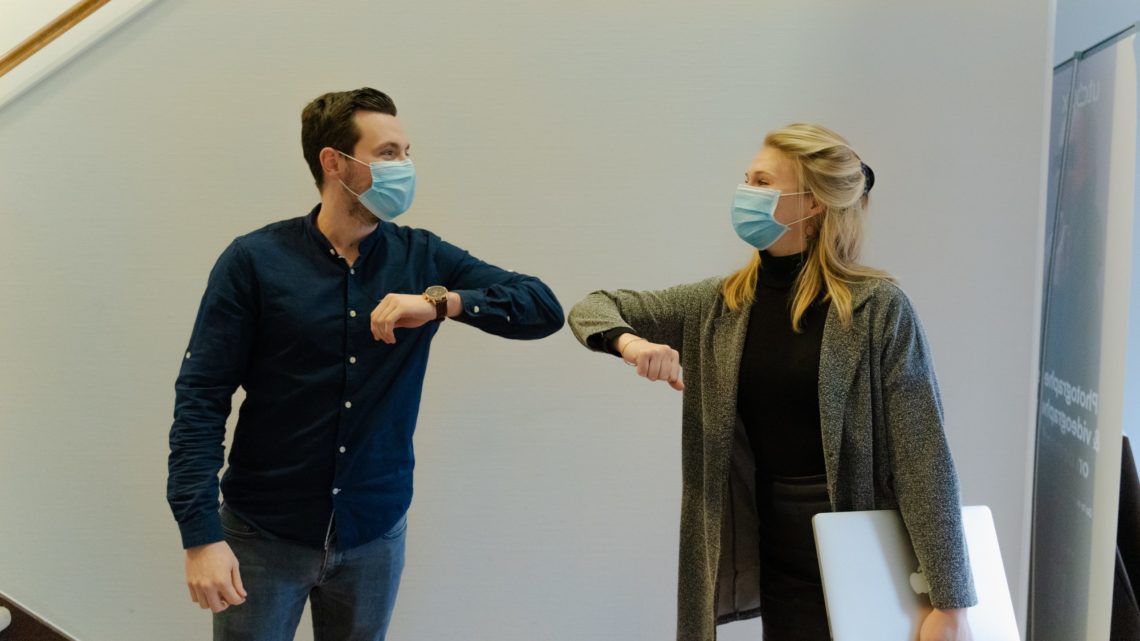Implementing safety plans is a hurdle all businesses must overcome.
Creating and implementing COVID-19 health and safety plans is a hurdle all businesses will have to overcome to ensure employees can return to the office.
Not only is this operationally challenging, but it must take into account the different feelings of its workers. What is safe for one employee, may not feel safe for another.
There’s also an added layer of complexity as all businesses must coordinate with public health orders.
So, how do you implement COVID-19 health and safety plans at work?
Getting ahead of your COVID-19 health and safety plans
Businesses plan for disruption.
Planning usually accounts for instances such as:
- Technological failures.
- Operational changes such as new leadership or moving offices.
- Staffing issues, like unplanned personal leave.
But the scale, severity and duration of the pandemic meant that most businesses were unprepared for such a large disruption.
Most did not have:
- Pandemic-specific policies.
- Pandemic-specific procedures.
- Capabilities to support immediate WFH needs.
- Capabilities to support large-scale staffing changes (as many people now had to balance working with home-schooling children).
- Capabilities to mitigate industry-wide candidate shortages.
The pandemic was—and the media’s favourite term for the event—unprecedented.
 Implementing COVID-19 health and safety plans
Implementing COVID-19 health and safety plans
There is no one size fits approach to implementing COVID-19 health and safety plans. The size of the business, the industry and the feelings of workers will all play a part in shaping the development of the plan.
However, there are a few ways to approach the complex task of implementing COVID-19 health and safety plans.
Have a people-first mindset
The first priority should be the health and safety of the workforce. They need to feel like they can complete their job and return to the office without putting their health or their family’s health in jeopardy. This might mean different things to different people and it’s important to be open to conflicting and deeply personal opinions.
In discussions, we have found many businesses have conducted anonymous surveys to understand what would make their workers feel safe in their return to work. Discuss with your management team how the results of the surveys might affect your decision. Will you be ruled by what most of your workforce would like? Or instead, do you need a unanimous agreement to ensure all workers feel their voice is heard? Consider holding a meeting before rolling out your policies so you can explain your reasoning.
Training and two-way communication
Ensure you have a quick way to communicate with all employees. This is essential, especially in the instance your workplace is identified as a transmission location. Be mindful that you will need both a way to quickly notify all employees as well as confirm their receipt of the notification.
The government’s QR code system is a good way to support your primary communication system. It acts almost as a fail-safe as all employees will have to check in and check out of the workplace daily. To ensure all employees are compliant, nominate a staff member to check the logs daily.
Create mitigation strategies
Complete a business impact analysis. Should your office or one of your business locations (in a supply chain, for example) need to shut down even for a few days, you will need to have a mitigation plan. Consider separating your business into small teams, so that not all will be exposed. Or, if you source items to sell in retail, consider diversifying your supplier base.
Invest in technology
If we have learnt anything from the pandemic, it’s that many people in many industries can successfully work from home. Consider further investing in technology that supports this. If you need to shut down the office, tools that allow your team to collaborate virtually will ensure the least impact on your business.

 Implementing COVID-19 health and safety plans
Implementing COVID-19 health and safety plans




